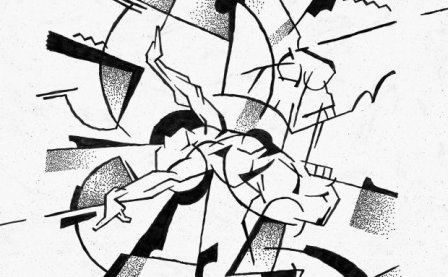In Perc’s latest, The Power and the Glory, the use of harshly-bleached color tones and jagged accelerative paces are construed to build a perceptually affective doomed futurism. The album’s eminent decay of organic materials as enveloped by time and celestial movers marks an intensive exploration of the defining connotations of genres like techno and drum & bass. The two genres each carry an aesthetic of utopianism, time-gauging, and sound sterility, which Perc — a.k.a. Ali Wells — spends the entirety of the record parsing and corroding, meditating on futurism in a rotten state; knackered electronics, brash drums mimicking items on conveyor belts. The Power and the Glory is propagandistic in this way, displaying and engineering a world wrecked and crumbling, technology becoming a useless dead weight as opposed to a vessel for the transformation and ascension of the human context.
Blistering coils of fed-back micro-formic static introduces the record, as blood-curling screams tumult out of the fizz. Foaming into the third track, the Nik Colk Void (Factory Floor)-featuring “Speek” puts the voice to another series of scrutinous tests. Void’s typically languorous, near-spoken delivery is dissolved into a kind of whistling and lush dust. These mineral-like soundbites are used as textural embellishments, sprinkled around the stereo field in disorienting and uneven sways, tied to a rooted and soaring pad.
Similar to the mechanical deconstructions of persons in the opening trio, the latter tracks utilize the mode of techno as a means of exploring urban decay — more explicitly, the decay of a generic structure. His past efforts tended to err on the side of the destroyed and the manic, but here those edges recede into an unsettling elegance. Perc could be seen as an explorer of industrial grind, being subsumed with a religious heft and catholic determinism into the dramatic, body-splintering implications of Italian Futurism. Techno’s full adoption of industrial music and Fluxus over the last few years speaks to a breaking point in the form.
Residual hums and dank, hollow pads appear jammed into place alongside Suicide-like screams, while wails show the body being mutilated between anachronistically-aligned, gear-like drum patterns and distortion. Futurist photographer Anton Giulio Bragaglia states in his essay “Futurist Photodynamism” that “cinematography does not trace the shape of movement, but rather subdivides it.” Similarly, Perc draws and quarters the body (and abstractly, the body of genre and industry). The accents of winding motoric devices and knocking field recordings as heard in “Horse Gum” are scenes of industry, products being churned into existence by tired and rusted machinery. Bragaglio goes on to say that the “subdividing” of the body occurs “with no rules […] disintegrating and shattering it without any kind of aesthetic concern for rhythm.” As evidenced by the staunch downbeat and rottery-like locked groove of “Dumpster,” Perc places the persistence of machines, the grounding points of genre, in the fore, with scattered drum & bass edits and distorted rimshots along the “right two times a day” clockish groove. In a breakdown, the track becomes a call and response of choppy synth, percussive edits, and delay.
Other tracks like “Galloper” see Perc tossing about a smooth pad line amongst strained and pitched percussion, glitchy electronics, and a spongy kick that pushes the track toward stiltedly joyous climaxes. Reversed closer “A Living End” ends the record with tumbling piano lilts and panning static forms. These spots of light pervade the record, giving it a sense of blind hope amongst the field of sprawled debris that make up this devastating record, an evangelical end to an album’s worth of suffering.
More about: Perc




